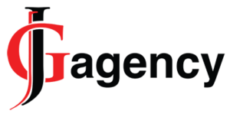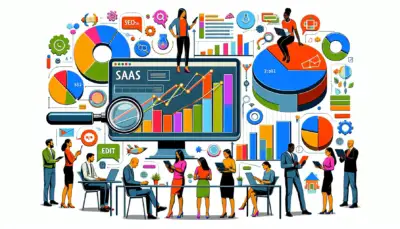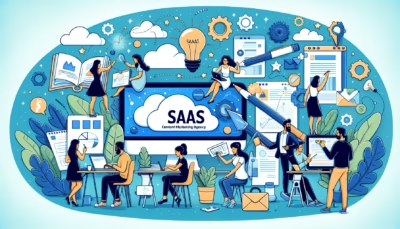Understanding SaaS Metrics
When I first started diving into the top marketing SaaS companies, I quickly got why knowing SaaS metrics is like having GPS for success. Stuff like trial-to-paid conversion rates, freemium upgrades, and how glued folks are to the product—these numbers tell you how healthy your business is. Let’s break it down and get cozy with these must-know SaaS metrics.
Trial-to-Paid Conversion Rate
Trial-to-paid conversion rate is the gear that shifts people from trying out your product for free to dropping cash for it. It’s like figuring out how convincing your pitch is during the trial period.
Trial-to-Paid Conversion Rate = (Number of Paid Conversions / Number of Trial Users) * 100
Let’s say you got 200 folks checking out your trial, and 50 decide to keep the party going by paying up:
(50 / 200) * 100 = 25%
This percentage tells you how your sales pitch is landing and is a game-changer for B2B SaaS marketing.
Freemium to Premium Conversion Rate
This one tracks how many folks upgrage from using the free version to going all-premium. It’s all about how snazzy your extra features look to them.
Freemium to Premium Conversion Rate = (Number of Premium Conversions / Number of Freemium Users) * 100
For example, you’ve got 1,000 freebie lovers and 100 of ‘em decide to scale up to premium:
(100 / 1000) * 100 = 10%
Watching this rate helps you see if people think your extra goodies are worth it. (Userpilot)
Product Onboarding Engagement Rate
Product onboarding engagement rate shows you how switftly new folks settle into your product. Nail it, and you’ll keep ’em sticking around instead of bailing out early.
Onboarding Engagement Rate = (Number of Users Completed Onboarding / Number of New Users) * 100
For instance, if out of 200 new folks, 150 finish onboarding with flying colors:
(150 / 200) * 100 = 75%
Getting a good score here prevents users from dropping like flies (making a smooth SaaS onboarding that keeps users).
Product Engagement Score (PES)
Product Engagement Score (PES) is like a dashboard checking how often and how deeply users are interacting with your product. It mashes together adoption, stickiness, and growth for the whole picture. (Userpilot)
PES = (Adoption + Stickiness + Growth) / 3
| Metric | Calculation |
|---|---|
| Adoption | Percentage of Active Users |
| Stickiness | Daily Active Users (DAU) / Monthly Active Users (MAU) |
| Growth | Percentage Increase in Users Over Time |
Imagine you got 60% adoption, 20% stickiness, and 40% growth:
PES = (60 + 20 + 40) / 3 = 40%
This score helps you tweak things to boost user smiles and interactions, guiding SaaS product marketing.
Net Promoter Score (NPS)
Net Promoter Score (NPS) is how you measure if customers are feeling the love and ready to sing your praises.
NPS = % Promoters - % Detractors
Survey your customers on a scale of 0-10: 9-10 are Promoters, 7-8 just shrug, and 0-6 are Detractors. (Userpilot)
If you talk to 100 users and score 50 Promoters, 30 Passives, and 20 Detractors:
NPS = (50% - 20%) = 30
Positive NPS? You’re golden, showing loyal customers ready to spread the word, making future profits look more like a sure bet (saas inbound marketing).
These vital metrics peel back layers on your product’s performance and user engagement, steering you down a path of smart decisions and growth in the booming world of SaaS. Want more insights? Dive into articles like the 5 most important saas metrics you should be tracking (and why).
Top SaaS Companies
My journey through the world of top marketing SaaS companies has been quite the eye-opener. Each of these front-runners brings something different to the table, offering fresh solutions that set them apart from the rest of the pack.
Alteryx
Man, Alteryx really knows how to make a splash with its analytic process automation. Starting 2024 with a market value of $3.42 billion, they’ve been on a steady climb, inching up by 2.20% annually (Datamation). What makes Alteryx special? It helps organizations dig into, share, and prep data while speeding up those tedious number-crunching jobs. Plus, it’s got everything you need to deploy models in real-world environments!
Databricks
Databricks is a behemoth in data analytics, no doubt! Boasting a jaw-dropping $65.5 billion market cap in 2024, they pulled in $2.62 billion in revenue last year, serving over 9,000 organizations worldwide. Its platform is a one-stop-shop for data engineering, machine learning, and analytics, letting teams work together on the whole data shindig and ML lifecycle.
Domo
Domo is another powerhouse in data analytics SaaS. By 2024, their market value landed around $363.25 million (Datamation). Domo’s magic lies in integrating data from here, there, and everywhere to whip up actionable insights with real-time visualizations—an absolute gem for decision-makers.
Sisense
Sisense holds its own in the SaaS analytics scene. Though specific numbers aren’t all out there for 2024, Sisense remains a go-to for companies looking to create and share insightful reports (Datamation). It turns complex data into digestible insights with its easy-to-use analytics tools.
Splunk
Splunk specializes in data analytics, especially all kinds of machine-made data. It flexed a market cap of $26.40 billion in 2024, with an ARR jumping 15% to hit $4.2 billion (Datamation). Splunk’s tools significantly boost performance, productivity, and security across various industries.
| Company | Market Cap | Revenue (2024) | ARR (2024) |
|---|---|---|---|
| Alteryx | $3.42 billion | N/A | N/A |
| Databricks | $65.5 billion | $2.62 billion | N/A |
| Domo | $363.25 million | N/A | N/A |
| Sisense | N/A | N/A | N/A |
| Splunk | $26.40 billion | N/A | $4.2 billion |
Checking out these industry giants has given me some fantastic insights into how their offerings suit the varied needs of businesses. If you’re itching to beef up your SaaS marketing content strategy, take a peek at our in-depth guides on saas content marketing agency and b2b saas content marketing.
Growth and Forecast
Total Global SaaS Market Revenue
Things are really looking up for SaaS products! With recent forecasts, it’s like watching a thriller movie unfold. The buzz is that the total revenue for global SaaS markets is shooting up to a whopping $339.1 billion by 2024. And get this—there’s a cool growth rate of nearly 19.28% per year until 2029 (Exploding Topics). It’s clear as day, folks are hungry for SaaS offerings.
| Year | Global SaaS Market Revenue (in billion USD) |
|---|---|
| 2024 | 339.1 |
| 2029 (forecasted) | Impressive growth at 19.28% CAGR |
Number of SaaS Companies Worldwide
The SaaS world is packed with movers and shakers. There’s around 30,000 SaaS companies across the planet, with about 17,000 of these digital wizards playing in the United States’ backyard (Exploding Topics). It’s a colorful playground of options for businesses from all walks of life, each looking for that perfect SaaS match.
| Region | Number of SaaS Companies |
|---|---|
| Worldwide | 30,000 |
| United States | 17,000 |
Revenue and Market Caps of Top SaaS Companies
If you want to talk cheddar, let’s get into the numbers of the big names. Adobe, a heavyweight in marketing SaaS, managed to hit an Annual Recurring Revenue (ARR) jackpot of $12.95 billion in Q2 2022 (Exploding Topics).
Wind the clock back to 2020, and the top 10 SaaS companies’ market values smashed through the $1 trillion barrier for the first time. Meanwhile, the middle-of-the-pack folks in the top 50 saw their worth rocket by 179% in just one year to a chunky $21.5 billion on average. And, let’s not ignore the average market cap of the top 50, which was nothing short of $38.1 billion, a handsome 162% jump over the previous year.
| Company | Annual Recurring Revenue (ARR) | Market Cap (2020) |
|---|---|---|
| Adobe | $12.95B (Q2 2022) | N/A |
| Top 10 SaaS Companies | N/A | $1 trillion+ (2020) |
| Top 50 SaaS Companies (Average) | N/A | $38.1B (2020) |
Then there’s Databricks—making headlines with a market cap of $65.5 billion in 2024. It reeled in $2.62 billion in revenues just last year, and serves over 9,000 companies worldwide (Datamation).
Scanning through these eye-popping stats, SaaS marketing managers and startup founders can get a real feel for the pulse of the industry. Eager for more tips and tricks? Swing by our page on b2b saas growth marketing.
Competitive Differentiation Strategies
Importance of Differentiation
You know, getting why differentiating in the SaaS world matters has seriously opened my eyes. It’s like the secret sauce for standing out among countless others and keeping customers hooked over the long haul. When I nailed down what makes my product tick, it was like hitting a jackpot. I could shout from the rooftops why folks should pick mine over theirs.
Conducting Competitor Analysis
Rolling up my sleeves and really digging into competitor analysis has been my go-to move. It’s all about honing in on a handful of companies—usually four to seven. I like to box in those head-on competitors but keep an eye on the sneaky ones coming up from the side. And for good measure, I keep tabs on the up-and-comers too. Here’s what I look for:
| Thing | Area to Focus On |
|---|---|
| Direct Competitors | Who’s in my space |
| Indirect Competitors | The alternatives out there |
| Potential Competitors | New folks trying to play |
| Product Features | What’s cool or different |
Using Competitive Intelligence Tools
For making life easier while being nosy about competitors, I got some trusty tools in my back pocket. These gadgets help me spy on what the other folks are cooking up. Here are my faves:
- Ahrefs: Swears by keywords. Shows what rivals are ranking for, and it sharpens my SEO strategy.
- SimilarWeb: Like having a radar for domain stuff. Displays where rivals’ traffic is coming from and what their users are up to.
- Meta Ad Library: The crystal ball for ads. Puts their advertising playbook on display.
Throwing these tools into my arsenal has automated a huge chunk of the competitor-watching game, making my life a whole lot easier.
Summary
Grasping how differentiation, smart competitor analysis, and some slick intelligence tools have shaped my playbook. It’s all about staying one step ahead and keeping things fresh. For more insights on stirring up your SaaS marketing game, pop by our resources.
Effective SaaS Pricing Models
Picking the right SaaS pricing model is like finding a comfortable shoe—get it right, and you’ll stride to success; get it wrong, and you might limp along miserably. In this part, I’m gonna spill the beans on three popular pricing styles favored by the top marketing SaaS companies: per user pricing, freemium pricing, and how pricing affects profit.
Per User Pricing
Per user pricing is as common in the SaaS game as a diner in New Jersey—pretty much everywhere. According to Pacific Crest’s annual SaaS survey, this model has found a cozy spot in many companies’ playbooks. Here’s the scoop: customers pay based on how many folks are using the software. It makes sense for keeping tabs on usage and raking in dough as your biz grows.
But it ain’t sunshine and rainbows all the time. Take it from me, duduct made me realize adding more users can hike up the costs, which might freak out some organizations. However, places like Gather Content offer plans with unlimited users, which ties costs to items and active projects instead, easing some pains (Cobloom).
Freemium Pricing
Freemium pricing dangles a freebie, a basic version of the product, while the fancy stuff comes through a paid ticket. This tactic is spot-on for roping in a ton of users and getting folks to give your product the old college try.
I’ve been in the trenches—freemium pricing can fire up user acquisition like a Fourth of July rocket. The pickle? Turning those freebies into paying customers. The secret sauce is to offer so much goodness in the free version that folks start itching for the premium perks.
Impact of Pricing on Profit
Price choices ain’t just dollars and cents—they’re the lifeblood of profit. You gotta balance Customer Lifetime Value (CLV) with Customer Acquisition Cost (CAC). That CLV should outshine the CAC like a Vegas showgirl; this balance is key for fast growth and boosting income (Paddle).
| Metric | Target |
|---|---|
| Customer Lifetime Value (CLV) | Way more than CAC |
| Customer Acquisition Cost (CAC) | Keep it low, low, low |
Sorting a clear pricing strategy boosts happy vibes and keeps customers sticking around. Service Level Agreements (SLAs) are the VIP pass here, laying out what folks should expect. Clear rules for response times and fixes keep service top-notch and users smiling (Hiver). Plus, having a supportive crew can lead to folks hanging around longer and keeping the cash flow steady (Hiver).
Pricing models aren’t just numbers; they’re a reflection of your connection with clients. For further insights into building successful strategies, check out our nifty guide on choosing the right SaaS pricing strategy.
Resources:
- saas email marketing texts
- b2b saas marketing
- saas marketing automation
- building an effective saas email marketing funnel: from welcome to retention
- the psychology of saas pricing: how to influence customer decisions
Enhancing Customer Support
When I kicked off my adventure with top marketing SaaS companies, I found out that top-notch customer support can make or break a business. Let’s chat about the basics of sprucing up your customer support: multichannel support, quick response times, SLAs, and proactive support moves.
Multichannel Support
To hold your ground in the SaaS arena, multichannel support is a must-have. At Hiver, they figured out that letting folks reach you via email, chat, phone, or social media makes for a standout user experience (Hiver). This flexibility caters to everybody’s quirks, letting them ask for help however they like.
| Support Channels | What They Offer |
|---|---|
| Users can describe their messes in detail. | |
| Chat | Real-time support for fixing stuff on the spot. |
| Phone | Direct talk for knotty problems. |
| Social Media | Quick fixes and getting chatty on a public stage. |
Offering multichannel support means your crew’s right where customers want you. That’s how you score high on satisfaction and keep ‘em coming back. Check out our b2b saas marketing page for some cool examples.
Response Times and SLAs
In the world of SaaS, speed in customer support is everything. Swift replies shrink downtime and mess-ups, setting you apart from the rest. Hiver shines with its speedy and handy customer support (Hiver).
SLAs (Service Level Agreements) help set what customers can expect in terms of speed and problem-solving. They give your support squad a yardstick to work by.
| Metrics | Simple Breakdown |
|---|---|
| Response Time | How fast they get back to a customer. |
| Resolution Time | How long till the fix is in. |
| Service Quality | The benchmarks for doing it right. |
Setting up rock-solid SLAs is a game-changer for consistency and happy customers. Check our saas marketing strategies for how this fits into your broader picture.
Proactive Support Techniques
Proactive support means fixing things before they go haywire. This kind of foresight saves customers from headaches and helps keep those dollars rolling in, as pointed out by Hiver (Hiver).
| Proactive Moves | Perks |
|---|---|
| Monitoring | Catches problems before they cause havoc. |
| Customer Education | Teaches folks to tackle little stuff on their own. |
| Feedback Loops | Gathers tips from users for tweaking and tuning. |
| Automations | Quickly sorts recurring issues. |
Focusing on being proactive not only stops problems in their tracks but also opens doors for upselling extra features or services. It’s a surefire way to cement lasting relationships. For more on engaging users, give a glance to our guide on proven saas customer retention strategies.
Boosting customer support is crucial for nailing SaaS success. By fine-tuning multichannel support, responding in a flash, and embracing proactive techniques, I found companies can seriously up their game in service quality and customer smiles. For more insights, take a look at saas marketing automation.
Strategies for SaaS Success
So, I’ve been deep-diving into the world of top marketing SaaS companies, and I’ve picked up some really cool strategies to help you crush it in the SaaS scene.
Niche Definition
Finding your corner of the SaaS universe is everything. Zero in on a specific problem or market and make it your mission to solve it better than anyone else. Trust me, this will have customers coming back for more, creating a loyal tribe around your product. When you really get what your customers are going through and fix their headaches, you turn your solutions into something they can’t live without. Don’t miss out on more about carving your niche in our piece on saas marketing strategies.
Innovation and Iteration
You gotta keep shaking things up in the SaaS game. Regularly tweaking your product to enhance its performance, ease of use, and looks should be your running game plan. Throw in new features here and there and keep your ear to the ground for user feedback. That’s how you keep your product fresh and valuable to users. This rinse-and-repeat approach keeps you ahead of the competition. For more nuggets on staying ahead, check out b2b saas growth marketing.
Building Brand Identity
Building a brand is more than just a snazzy logo or catchy slogan. It’s about creating a personality, a voice that screams “you.” A strong brand makes customers trust, love, and share your product. Remember, every single thing connected to your brand—whether it’s how you chat with customers or the look of your marketing—not only has to match your core beliefs but also amp up the trust factor. Get the lowdown on crafting a killer brand in our guide on building a thriving online community for your saas users.
Collaboration and Partnerships
Jumping into the sandbox with other SaaS stars can skyrocket your influence and reach. Think about tapping into their networks, exchanging ideas, or doing joint promos—it’s about boosting your visibility and creating awesome collaborations. Team up for content get-togethers or product hookups that are a win for both of you. Strategic partnerships can bring both of your names a heap of benefits. Look into more collaboration tips in our article on saas inbound marketing.
By weaving these strategies into your playbook, SaaS companies can really shine in this fiercely competitive space. Whether it’s honing in on your market’s needs, constantly refreshing your product, creating a brand that resonates, or finding powerhouse partners, these methods come together to build a sturdy base for growth and kicking it up a notch.





